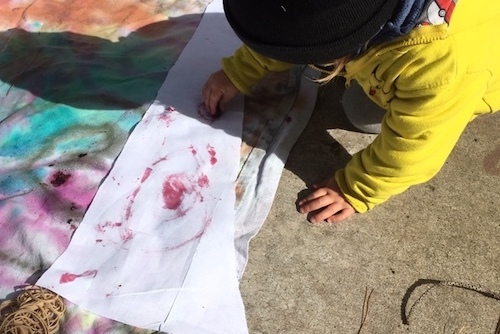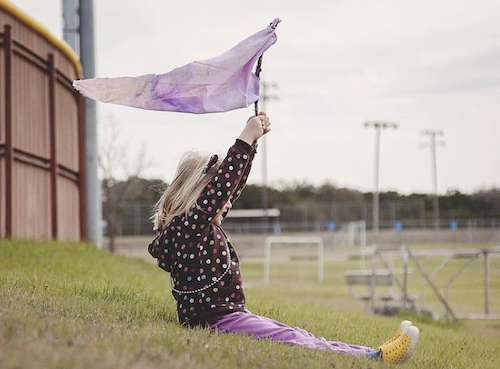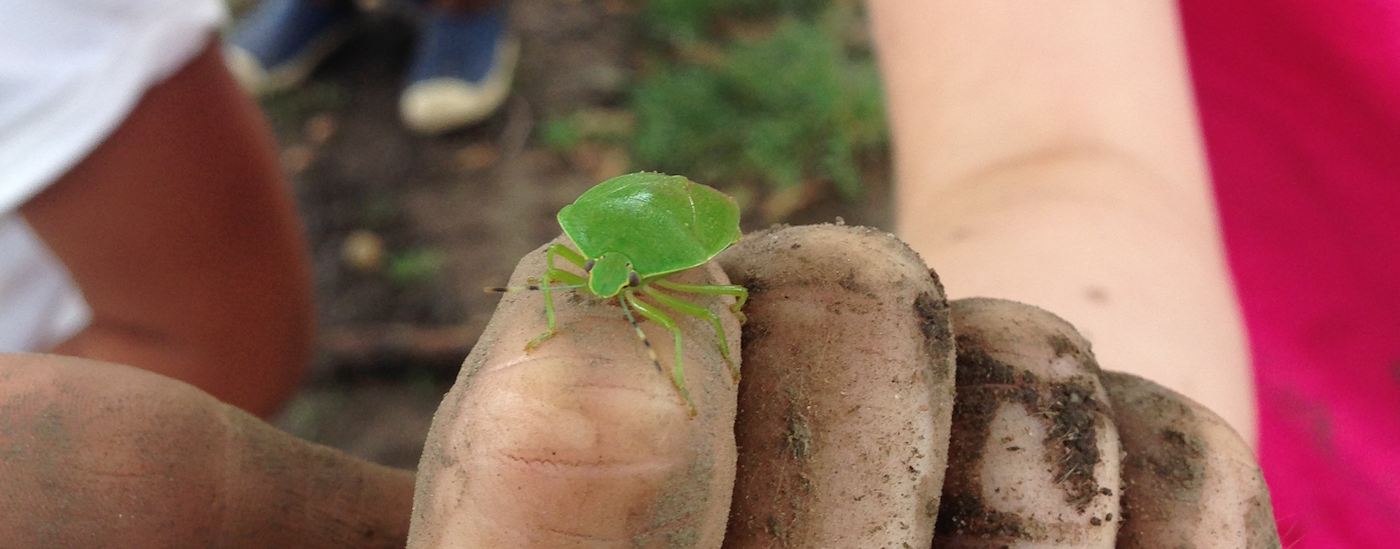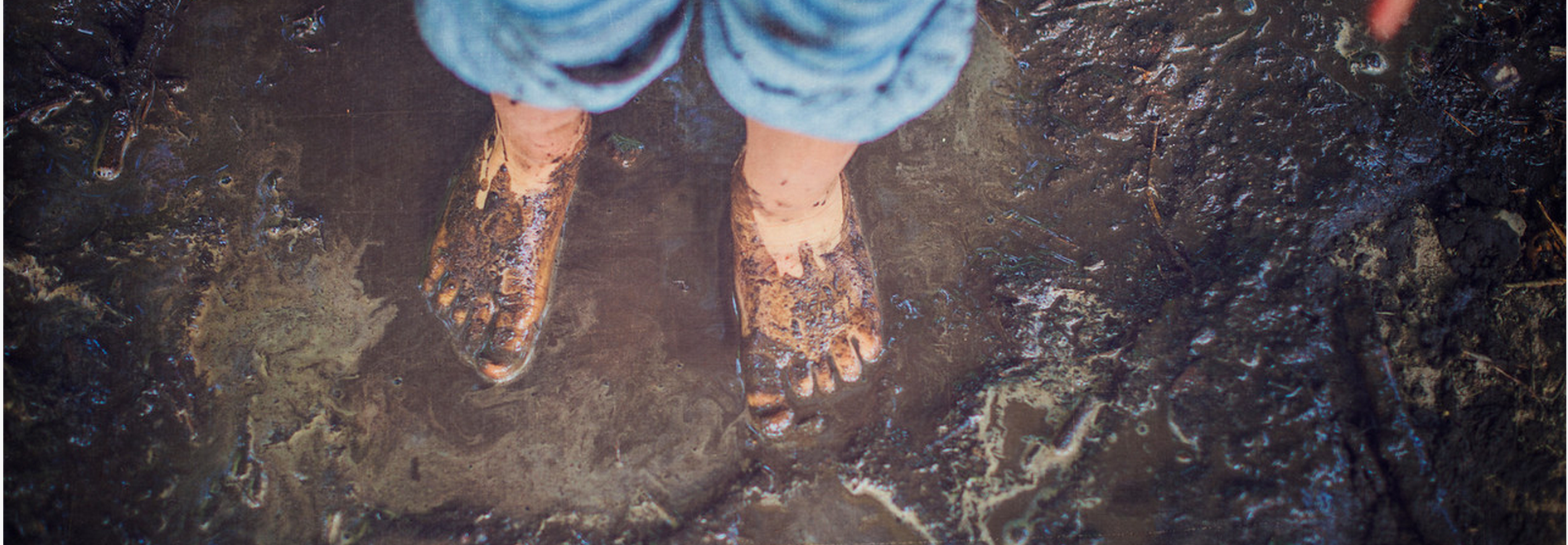Catch the Wind
-
Age: 0 to 8+
-
Time: Under 1 hour
-
Materials: old sheets, scissors, rubber bands, paints or fabric markers
- Skills: Curiosity, Imagination, Active Lifestyle, Sensory
A windy, blustery day can sometimes be off-putting to kids and can put a damper on outdoor play. Wind flags are one of our favorite ways to help kids flip the script on wind, changing it from a menace to a playful friend.
Not only do wind flags help kids make fast friends with wind, the flags have proven to be magical toys that lead to hours, even days of play. The best part? We adults get to witness and even share in the pure joy that even the most reserved kids openly feel as they run wild with the wind, twirling and whirling their flags.
In honor of Flag Day, this activity is featured in our June Activity Calendar. If you do not yet have your free copy of the calendar, get it here.
Not only do wind flags help kids make fast friends with wind, the flags have proven to be magical toys that lead to hours, even days of play. The best part? We adults get to witness and even share in the pure joy that even the most reserved kids openly feel as they run wild with the wind, twirling and whirling their flags.
In honor of Flag Day, this activity is featured in our June Activity Calendar. If you do not yet have your free copy of the calendar, get it here.
The Guide
- Chat about the wind: Prompt thinking by asking questions like, "What is wind? Is there wind today? How do we know it's there (feel, hear, see)? Do you like wind? Why/why not? Can you imagine a tool we could use to find wind? What might it look like? How might it work? Do you know that scientists, sailors and people around the world use the same tool to catch and even measure the wind?! Do you know what that tool is?....A FLAG? Should we make a flag to hunt the wind?"
- Cut out flags: Get an old or cheap bed sheet and a good pair of scissors. You can also use an old shirt, pants or any fabric that has some stiffness to it. We fold and cut sheets into triangles of various lengths. The different sizes appeal to different kids and allow kids to experiment with flag size.
- Decorate the flags: Give kids space, time and materials to decorate their flags using paint, markers or any other art materials you have on hand. Our favorite way is to make paints from natural materials.

- Find flag poles: Gather sticks that are more or less straight and about 1 yard in length. A stick with small bumps and notches may help keep the flag in place.
- Attach flags to poles: Fold over about 1-2 inches of fabric along the edge of the flag where you’ll put the pole. Next, make cuts (about ½” wide) every few inches along that fold. Then, open the folded edge and weave the stick back and forth through the holes. Finally, tie a rubber band around the top of the flag and stick to keep the flag secure through spirited hunting and waving.
- Take your flags out: Go to an open space, ideally an open field or hillside. Be sure there is enough wind, ideally at least 15 mph—the windier the better. Or, start out by trying to find or manufacture some wind using your flags (wave, dance, run, etc.).
- Hunt for the wind!: To stimulate flag play and heighten kids' experience with the wind, tell kids you are going to use your flags to hunt for the wind. Watch how the wind makes your flag "dance." Try to find the spot where the wind is the strongest, fastest or, as our daughter says, "the windiest."

- Just let them play: Let the kids run or dance around the area, holding their flags. Then, just see what they do with the flags. If they are reluctant, grab a flag and dance a bit yourself--it won’t take them long to join in. If given time to just play, kids may use the flags to enhance imaginative play, doing things like holding parades or establishing ownership of logs, forts or other outdoor areas.
Why is this activity great for kids?
Dancing, running and leaping with a flag is just pure joy! Wind flags are also a perfect tool for make believe play. We have seen wind flags transformed into the decoration for a fort or castle, a horse, a witch's broom, the ringmaster's staff in a pretend circus, and more. Once the flags are made and wind gets into them, kids can watch them, wonder, and experiment, developing curiosity and a habit of scientific inquiry. If older kids (~age 7+) are interested, you can start to learn more about how to estimate the wind's speed by monitoring a flag’s movement.



